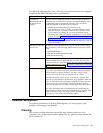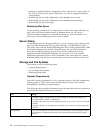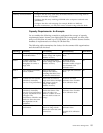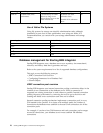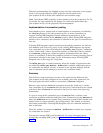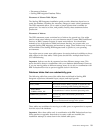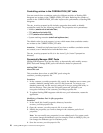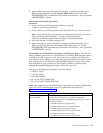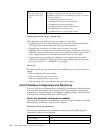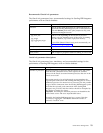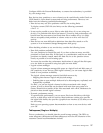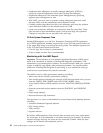
5. After modifying the pool properties in customer_overrides.properties, go to
JDBC monitor page and click the Refresh JDBC Pools button, or run the
REFRESHJDBC OPS command from the install root directory: ./bin/opscmd.sh
-cREFRESHJDBC -nnode1
Removing Pool from jdbc.properties:
Procedure
1. In the install_dir/install/properties directory, locate the
customer_overrides.properties file.
2. In the customer_overrides.properties file, delete the pool you want to remove.
Note: Verify that all the pool properties are removed for the pool you want to
delete, including, jdbc.properties_*_ext, jdbc_customer.properties,
customer_overrides.properties files and system_overrides.properties.
3. Save the customer_overrides.properties file.
4. After removing the pool properties in customer_overrides.properties, go to
JDBC monitor page and click the Refresh JDBC Pools button, or run the
REFRESHJDBC OPS command from the install root directory: ./bin/opscmd.sh
-cREFRESHJDBC -nnode1
Controlling User and Password Credentials with Effective Dates: You can now
change database passwords on a scheduled basis in Sterling B2B Integrator. When
you add or modify a pool, you now can control user and password credentials
with effective dates. Multiple user and password credentials are associated with a
pool. A date/time entry indicates to Sterling B2B Integrator when to start using
that credential for new connections. This applies primarily to external pools,
although Sterling B2B Integrator database pools will also work.
You can use the following variables for the date format:
v 15:00:00 3/16/09
v 3/16/09 15:00:00
v 3/16/2009 15:00:00
v Sat, 12 Aug 1995 13:30:00 GMT
v Sat, 12 Aug 1995 13:30:00 GMT+0430
Note: Other formats may be used as long as they follow the Internet Engineering
Task Force (IETF) standard date syntax. For additional information, see
http://www.ietf.org/rfc/rfc3339.txt.
Pool Property Description
newDBPool.password.1 =
<new password>
You can specify alphabets and combination of alphabets and
numbers for the password. You can use numbers for
newDBPool.password.1 or newDBPool.password.2 as well as
following examples:
v newDBPool.password.a=password_a
v newDBPool.effective.a=1/01/2005 09:35:00
v newDBPool.password.b=password_b
v newDBPool.effective.b=02/01/2009 09:35:00
v newDBPool.password.c=password_c
v newDBPool.effective.c=06/18/2009 11:07:00
Performance Management 21



